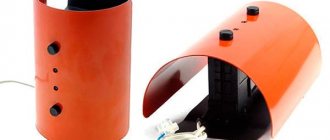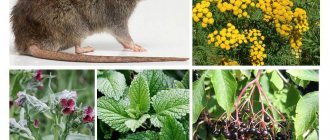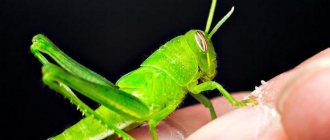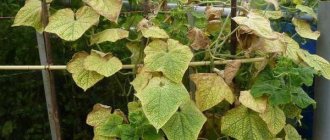There are several types of rodents such as mice. Among them there are also voles. This small animal can cause serious damage to crops, as well as food supplies for the winter. In addition, the vole mouse can become a source of infection with certain diseases, such as tick-borne typhoid fever, hemorrhagic nephrosonephritis, tularemia, leptospirosis and other infectious diseases dangerous to human health.
Many gardeners and gardeners are interested in such questions as determining the presence of rodents on the site, as well as how to deal with them so that the pests cannot appear again?
Vole mouse: description
The vole mouse is a pest that differs in size from its relatives. These living creatures grow up to 130 mm in length, with 70% of the individual being its tail. The animal has small brown eyes and a pointed muzzle. The animal's ears are pressed to the head and slightly tilted forward. Despite its very small size, the rodent can cause considerable damage to plantings of various crops.
The mouse has coarse, hard fur that is beige, gray or brown, depending on its habitat. On the back you can see a black, longitudinal stripe, and the lower part of the abdomen is painted white. The color of a rodent also depends on age: younger individuals have a darker body color, adult individuals have a slightly lighter shade, and older individuals have a beige tint, with the presence of gray hairs.
This pest is distributed throughout Europe, China, Taiwan, and Mongolia. Despite its name - vole, the rodent does not like to settle in fields, but chooses areas located on forest edges with a lot of grass. In addition, he can choose greenhouses, cellars or living quarters. With the arrival of winter, the field mouse moves to places where hay, straw and other plant components are stored.
They can wait out the winter in natural shelters or in burrows dug themselves. At the same time, they are able to dig holes for themselves up to 4 meters long. One of the exits will always lead to a pond. In addition, there is a place for a nest, as well as for food supplies. They are usually located at a depth of up to 1 meter. Basically, the vole mouse chooses areas with high humidity. Swampy places meet these conditions.
The rodent is highly fertile. Reproduction occurs from spring to late autumn. During this period, the animal is capable of producing up to 4 litters, with the number of mice up to 4 or 5. Therefore, it is quite difficult to cope with the pest. In such cases, the pest should not be allowed to multiply.
It is quite easy to recognize a rodent from its relatives by a number of characteristic features. For example:
- This species of animal has a longitudinal black stripe on its back.
- Voles are somewhat larger in size.
- Voles are similar in appearance to Daurian hamsters, but have a longer tail.
- The vole is different in that the duration of puberty is about 100 days.
- Mice can appear in areas where crops are stored.
- In conclusion, voles prefer wetter areas for their life activities.
On a note! As a rule, rodents are active in the dark, but in winter they do not rest even during the day. These small animals do not hibernate during the winter, so they constantly need to eat something.
MICE - INTERESTING FACTS
Water voles: appearance and distribution
Water voles are sometimes called water rats or mice, but, strictly speaking, they have a very indirect relationship with these rodents, despite their external resemblance to them. These animals actually belong to the hamster family, although they bear little resemblance to the familiar domestic hamsters. Water voles look about the same as common voles, but they are noticeably larger. An adult can reach 15–25 cm, with the tail making up most of its length.
Water voles prefer to live in wetlands
This animal has thick, fluffy dark gray fur from the beginning of its short muzzle to the base of its tail, which is covered with hair and has a small tassel at the end.
You can meet the vole almost throughout the entire territory of Eurasia - right up to Siberia and the North Caucasus. Most of all, she likes marshy areas and the banks of reservoirs, but fields, meadows and even vegetable gardens are also excellent for their life. These animals are very tenacious and prolific, so nothing threatens their spread.
Read also: How to choose a garden vacuum cleaner for your dacha
Damage caused by voles
If your summer cottage is located in a rural area, especially near rivers, lakes and swamps, prepare for the appearance of uninvited guests. Water voles, despite their name, live well in drier areas, including farms, vegetable warehouses, granaries, home gardens and vegetable gardens.
Small depressions (burrows) will appear in your area if water voles appear there
Video: rodent nutritional features
Reasons for appearance
These small animals constantly migrate in search of food. You can always find something to profit from at your dacha or garden plot. Food can be found not only in the summer, when it is grown by the owner, but also in the winter, when the owner stores food for the winter. Therefore, when it is cold, warehouses, basements, cellars, etc. become the most attractive. In addition, a vole is able to get into a person’s home. She will do well in the kitchen, where she can find leftover food and water for herself. It penetrates into the house through various cracks in the floor, through open windows and doors, if there is no obstacle for it.
Determining that a mouse has appeared in the house is not at all difficult. Its presence is indicated by a peculiar “mouse” smell, as well as the presence of remains of this animal’s vital activity on the floor or in other places. In the garden it is also not difficult to determine the presence of a vole by the presence of burrows. In addition, they are constantly gnawing on something. This is due to the fact that a rodent’s teeth grow throughout its life and need to be ground down. In winter, the mouse feeds on the bark of various shrubs, as well as fruit trees, which causes serious damage to cultural plantings.
Best Pest Control Methods
The fight against mice in the country or in the house begins with choosing a method of controlling rodents. You can choose a product based on different criteria:
- Prices (there are cheaper and more expensive products).
- Security level. Chemical methods are mostly poisonous and therefore require special safety measures.
- Degrees of humanity towards pests. Modern methods offer bloodless ways to protect your home from rodents.
Physical methods
To get rid of mice in your summer cottage and in the house, you can purchase mechanical, electronic traps or glue baits.
Mechanical traps
Mouse traps are factory-made, and there are also many videos on the Internet about how to make them at home. The method is not very expensive and ineffective, especially if the mice have managed to breed significantly. The percentage of animals caught from the entire family is tiny.
This method is an excellent solution if the presence of a mouse is detected at the initial stage and there are no offspring yet. The principle of the trap: there is a piece of smelling food inside, the mouse crawling towards it touches the trigger and the device closes. There are humane options when the animal is not injured, but simply ends up in a confined space. The next morning it can be taken and released at the nearest landing.
Electronic traps
A new development is an electronic trap. Once inside, the animal receives a fatal electric shock. An indicator on the surface indicates whether the casket is empty or not.
Glue trap
The second method of physical violence is a glue trap. For this, glue is purchased at a specialized store. It is applied to a cardboard, on which, in addition to glue, a tasty bait is placed.
Types of glue traps against mice and rats
Chemicals for rodent control
The chemical industry offers rodenticides to combat mice. They come in two types:
- Fast action. It is enough to eat the poison once. The death of the animal occurs within a couple of minutes; there are drugs that kill mice within a few days.
- Cumulative action. The poison must enter the rodent’s body for some time. It will take several weeks to destroy.
Effective means of control include: “Rattidion”, “Bromine-paste”, “Norat”, “Blockade”, “Green House”, “Zernotsin-neo”, “Barrier”, “Nutcracker”, “Final”.
12 effective mice repellents
Attention! Preparations with high concentrations of poisons are permitted for use only by organizations specializing in rodent control. They must have a certificate and trained employees.
Folk remedies
Traditional methods of dealing with mice are usually inexpensive and easy to use. The most effective are:
- Finely ground wood ash is scattered onto a clean, dry floor. It is taken at the rate of one full bucket per 7 sq.m. Ash contains alkali. Over time, the mouse's paws will begin to corrode. Alkali naturally enters the stomach, thereby causing discomfort. The mouse family will be forced to move to another place. The advantages of this method are that the ash is not harmful to humans, the disadvantages are that there is a lot of garbage.
- Flour + alabaster. To do this, mix a dry mixture of building gypsum and ordinary flour in a 1:1 ratio. A bowl of water is placed next to the dry mixture, which has an attractive smell to the mouse. The gypsum hardens in contact with water and the mouse gets indigestion.
- Formaldehyde and kerosene. The strong smell repels mice for a long time. They should be used to treat corners and floors in non-residential premises.
- Turpentine is an enemy of rodents. Place a soaked rag near the mouse hole, after a couple of days you need to “refresh” the turpentine.
- Scatter mothballs and wood chips along the mouse paths.
- Mix vinegar + ammonia in equal parts and moisten bay leaves with the resulting mixture. Place them around the house and the outskirts of the site.
- A lying plastic bottle, greased with vegetable oil inside, is a humane way to catch a mouse.
Note! Mice and rats are very sensitive to human odor. All mixtures should be prepared using rubber gloves.
If you plan to use food bait, the rodents must be “fed.” 3-5 days before, place food suitable for food in the planned place.
Cleaning the summer cottage
Of course, it is unlikely that anyone will be able to get rid of mice in their dacha forever. But it is possible to make sure that their arrival is immediately noticeable and that measures can be taken in time. To do this, the dacha area should be regularly cleared of debris. Mice and rats love to huddle in trash heaps.
Therefore, twice a year at the end of the season (end of November) and before starting a new planting (end of March, April), you need to do a general cleaning of old trees, shrubs and fallen leaves, and remove the remains of spoiled root crops.
Ultrasonic repellers
Having decided to choose this humane method of fighting mice, you should determine the type of room that will be protected.
- Residential.
- Non-residential.
- Premises that are sometimes visited.
Of course, in residential buildings preference is given to silent devices, such as Typhoon, Tornado, WK. You need to choose a model based on the area.
Ultrasound Model Definition
For premises that are visited during the day but not at night (warehouses, production workshops, office locations), you can use a combined device. During the day it is silent and the power is low, but at night the performance increases. The power is higher and there is an audible sound. The Typhoon brand offers several similar models.
In a non-residential building you can use any category of ultrasonic repellers. But the efficiency is higher if, in addition to ultrasound, there is also regular loud noise.
Important! When calculating the number of devices, it should be remembered that ultrasound does not pass through solid surfaces. And soft objects partially dampen them, reducing the power of the waves several times. The presence of partitions requires the installation of one device in each fenced area.
Help from professionals
The Russian market is full of companies that specialize in rodent control. For a relatively small fee, a team of professionals will carry out all the necessary measures to eliminate rodents. If cleaning is required in a residential area, you should take care of overnight accommodations for the next couple of days.
Natural enemies of mice
The simplest and most effective way to combat small rodents is, of course, cats and moles. But moles, in addition to feeding on mice, cause damage to plant roots. Therefore, this is not the best option for summer residents.
In addition, to get rid of mice and other gnawing pests using folk remedies, you can resort to repellents.
Repellent plants have a persistent aroma that repels mice. Therefore, planting them around the perimeter of a summer cottage effectively helps fight rodents. They are especially repelled by the smells of all types of elderberry (red, grassy, black). If it is not possible to plant it, you can use the dried version of elderberry flowers. They are laid out under cover material for winter planting.
Bunches of dried chamomile are placed in storage areas for vegetables and cereals.
In addition, you can both plant and dry the following aromatic herbs and garden crops:
- tansy;
- sagebrush;
- mint;
- garlic;
- coriander;
- tomato.
Important! There are plants in nature whose vapors are poisonous to mice and rats. But it is no less harmful to the human body, so this method of control can only be used on open land, far from housing. These include: castor bean, crow's eye, hemlock, henbane, datura, thermopsis and aconite.
Harm to humans
This rodent is quite large in size compared to other types of mice, and therefore quite dangerous for agriculture. They spoil the harvest both in the field, which has not yet been harvested, and in granaries, as well as in other warehouses where food is stored. When they want to eat, and they always want to eat, they eat grains, tomatoes, sunflowers, cabbage, carrots, beets, etc.
When they get into the cellar, they can destroy all the reserves, most of which the rodent simply spoils and humans cannot eat such products. With the onset of spring, the pest moves to the area where it begins to eat young shoots of cultivated plants, which causes serious damage to the crop that has not yet appeared. Therefore, if a vole mouse appears on the site, it is necessary to immediately take measures to destroy or expel it. It must be remembered that this rodent reproduces quite quickly.
The best poison for voles
Poison is one of the most popular methods in the fight against voles. Many users prefer it to other methods because of its simplicity - having suffered with installing mousetraps and not catching a single pest, many buy poison and this, according to them, becomes a salvation. We have chosen the most popular and proven product over the years.
Tomcat All Weather Bait Chunx
Tomcat All Weather Bait Chunx is a powerful poison for ~$20 that is used to control a variety of rodents. It consists of special waterproof pieces of poison with the active substance bromadiolone. It is this rodenticide that is recognized by American scientists as effective in the fight against voles - it causes internal hemorrhages in rodents, but several doses of poison are required for a lethal outcome.
There is no need for any tricks to use - we evenly place the poison near the expected sites of activity and wait for the result. This is not difficult to do in the garden, but if the voles have occupied too large an area, there will probably be little benefit. In any case, remember that this poison is also dangerous for your pets, so keep them away from treated areas.
How to deal with mice and voles
To get a significant positive result in the fight against voles, you should be guided by a number of factors. For example:
- It is imperative to take preventive measures that prevent the appearance of rodents on a dacha or household plot.
- It would be a good idea to use physical control methods if there are too many pests on the site.
Over the centuries, people have come up with a lot of ways to control pests. At the same time, it should be noted that there are 3 main ways to get rid of rodents:
- Using folk remedies that are environmentally friendly and absolutely harmless to humans.
- Physical methods of control, using all kinds of traps, mousetraps, snares, etc. The cat, which is a natural enemy of mice, is also included in this category, although modern cats are not very predisposed to fighting mice.
- Based on chemical components, in the form of poisons, aerosols, baits, etc. Chemical control agents do an excellent job, especially if the pest population is large enough, but they are not safe for humans and domestic animals.
When choosing one or another method of getting rid of these voracious animals, you should pay attention to the conditions for using control agents. This is the only way to get rid of rodents and not harm your health, as well as the future harvest.
Folk remedies
Oddly enough, but where there is a man, there are mice. Therefore, a person always had to look for means that could help get rid of such a neighborhood. Man, through trial and error, managed to find out which plants pests avoided and began to prepare infusions and decoctions based on them, and used some of them fresh or dried. Therefore, when starting the fight against mice, it is better to use chemical means of control as a last resort, having actually tested drugs based on natural ingredients.
Recipes from the people against field mice:
- Take wheat flour and lime in equal quantities, as well as a pinch of salt . All ingredients are combined together and mixed thoroughly. The bait is laid out in small containers and placed where rodents prefer to appear. You need to place water next to the bait, since without it the active action of the product will not work. When the mouse eats, it will immediately drink water, which will activate the lime. As a result, a blood clot forms in the animal’s stomach, which leads to death.
- During the summer, you should consider stocking up on some herbs such as wormwood, mint, wild rosemary, tansy, etc. Herbs are laid out in boxes in the kitchen, in cellars, pantries and other rooms where these animals can manage. Bouquets of such herbs are laid out around the entire perimeter of the house, and they are also tied around fruit trees.
- If there are no herbs, then you can use essential oils of these plants . If you moisten small pieces of fabric with oils and place them in places where rodents are most concentrated, then they will not appear in these places. Essential oils of coniferous trees, citrus fruits, and tansy oils are used.
Physical methods of struggle
Most owners prefer to use various traps to combat voles. At the same time, you have to constantly remove dead rodents every morning. There are more humane mechanisms that keep these animals alive, but here you need to be prepared for the fact that mice released into the wild will again come to spoil the harvest. In any case, the neighbors will definitely have them.
Self-made traps are quite effective, despite the ease of manufacture. Homemade traps:
- Glue mousetrap. Regular glue will also work, but it is better to use a special glue that is designed for this purpose. It contains components that attract rodents with their aroma. In addition, the composition includes a toxic substance. To make a trap, you need to take a piece of cardboard or other material and apply adhesive in strips up to 5 cm wide. It is better to put bait (optional) in the center of the trap, which will make the trap more effective.
- Mousetrap from a jar . Take a half-liter jar and place bait on its bottom. The walls inside the jar are covered with a thin layer of butter. The jar should be installed so that the rodent can easily get inside the jar. If this happens, the pest is unlikely to be able to get out.
Can vs Mouse
Chemicals
The advantage of chemicals is their instant action, which guarantees getting rid of pests in a short period of time.
Effective drugs include:
- "Storm" wax tablets . The tablets have a more deterrent effect, but if a rodent wants to taste them, it will die within 2 weeks.
- Universal "Granules" . The product is made on the basis of natural wheat grains. It does not act immediately, so individuals have time to infect the rest of their relatives. Using this remedy, it is possible to get rid of an entire colony.
- Glue "Musquidan" . Intended for the manufacture of special traps. The glue is applied to the cardboard, and the bait is placed in the center. When the mouse wants to try the bait, it will stick and then die.
The vole mouse has many natural enemies: owls, martens, foxes, and weasels. It is worth noting that an owl can eat up to 2 thousand mice in 1 year. The weasel is small in size and penetrates mouse holes, destroying entire offspring. The fox also feasts on mice, especially in winter.
How to get rid of a vole
The following are several effective ways to combat small rodents. Some of them will definitely work in your case.
Try setting humane traps near burrows and nesting sites in bush areas. Place peanut butter baits in the early evening when voles are most active and move the traps as often as necessary to get rid of them. Take the prisoners away from the site and release them into the field.
In this case, the key to success will be patience and perseverance.
If the problem has reached its peak, you can kill the rodents with a rodenticide. Consult the horticulture department to find an effective and approved product.
To discourage voles from chewing on the bulbs, add gravel to the hole at the time of planting. You can also spray the root vegetables with a fungicide to repel pests. In addition, there are varieties of onions that are resistant to rodents.
A good way would be to plant onions in the fall.
Prevention measures
There are ways to prevent rodents from entering dacha plots. Such events include:
- Prevent the accumulation of garbage on the site, adhering to the main rule - keeping the site clean.
- Practice using Storm tablets. They should be placed in places where the crop is stored.
- Use sticky traps throughout the year.
The vole mouse is a dangerous rodent that needs to be dealt with, as it can ruin most of the crop.
How to get rid of mice, fantastic!
How to get rid of field mice and voles in the country?
The search for methods of catching or ridding an area of garden pests is a more than relevant topic. It is very difficult to choose one method or specific means due to the extreme caution and ingenuity of rodents. You can use one of two tactics: offensive or preventive.
Read also: Ground cover roses for the garden: description of varieties
Experts advise:
Poisoned baits, pesticides and traps in the case of field mice may not give the desired result. The fact is that it is better to place such means of control away from the free access of children and pets. If you cannot limit accessibility, there is a high risk that instead of a mouse, someone for whom it was not intended at all will stumble upon a dangerous “surprise.” The use of radical methods is best left to professionals.
Preventive methods
To carry out treatment against field mice without endangering the life and health of others, you can pay attention to folk remedies and methods. For example, plants that have a strong unpleasant odor can be used as a means of control. These include elderberry and garlic. You can also place them soaked in strong-smelling substances of chemical origin - kerosene, ammonia, in burrows found on the territory of your land plot.
Another effective solution is to fight with sound or vibration. Cans and plastic bottles tied to a pole can be used as a source of noise.
Contacting specialists
Feedback from our client: We ordered treatment for country voles - the mice became insolent, they dug up the entire area in the spring, and in the winter they gnawed at the base of the trunk of young trees. The specialists arrived quickly, the price was adequate for the volume of work, they offered premium, odorless preparations, and explained everything in detail. Two months have passed - not a single new hole or traces of mice remain.
Common means of controlling mice in the countryside
- Get a cat. But remember that these animals often cannot cope with the task, especially at a rapid pace.
- Set up mousetraps. If you choose the right bait, they are quite effective. Suitable baits include pieces of flavored cheese, fried lard, and crusts of bread dipped in sesame oil.
- Use live traps - beer bottles held at an angle. The aroma of barley and hops will lure the animal, but it will not be released back into the wild, since the glass surface is slippery. Release the mouse from the live trap away from your dacha - preferably 10 km away, since otherwise there is a high probability of returning to its native land.
- Make the mice as uncomfortable as possible: soak any rags in peppermint oil and push them deeper into their holes. Entrances should be caulked with foam.
- Scare the mice with noise. To this end, play loud music for several hours several days in a row.
To prevent the loss of the harvest of fruit plants, it is recommended to start fighting
Question No. 1: Do all mice harm humans?
Answer: Mice adapt very easily to any conditions and live wherever they find housing and food. However, not all mice that live near a person harm him and must be destroyed. Some of them, living in their natural environment, do not encroach on human food and things. However, certain species of them accompany people everywhere and cause significant harm to them, although they also live in the natural environment.
Question No. 2. Which plants are deadly poisonous to mice?
Answer: These are the following plants: henbane, datura, spotted hemlock, black henbane and others. When working with them, you must wear gloves, goggles, a face covering and protective clothing.
It is easier to prevent a rodent invasion than to rack your brains afterwards about “how to get mice out of the area?” for example, you can:
- Plant fragrant barriers of wormwood, thuja, tansy, elderberry and blackroot near the fence.
- Prepare decoctions from the same plants and fill the holes with them.
- Sprinkle garden paths and the ground under trees with wood ash, which mice cannot tolerate.
- You can place a bandage soaked in ammonia in the discovered holes. For greater efficiency, wrap in plastic and leave a small gap in it.
- In the garden, any bucket of water can be turned into a field mouse trap. It is enough to sprinkle a thin layer of grass dust or straw on the surface of the water, sprinkle with seeds or sprinkle with oil. The mouse will climb up the piece of slate, jump into the bucket for food and drown.
- The trap can also be a regular snap trap. To ensure that a captured rodent is not eaten by its relatives, such devices will have to be constantly checked.
- Sticky mats are also an option, but only if there are only a few mice. Traps will have to be checked daily and replaced with fresh ones.
- Voles do not tolerate vibration and noise. A simple design, similar to a children's pinwheel, will help them create a “happy life.” The device is stuck into the ground to a depth of 20-30 cm. In windy weather, the propeller will spin and annoy pests.
- Bells and tin cans on low poles work on the same principle.
- Mice also don’t like the hum created by plastic bottles, half buried in the ground with their necks tilted in different directions.
We suggest you read: How to deal with horseradish in the garden











